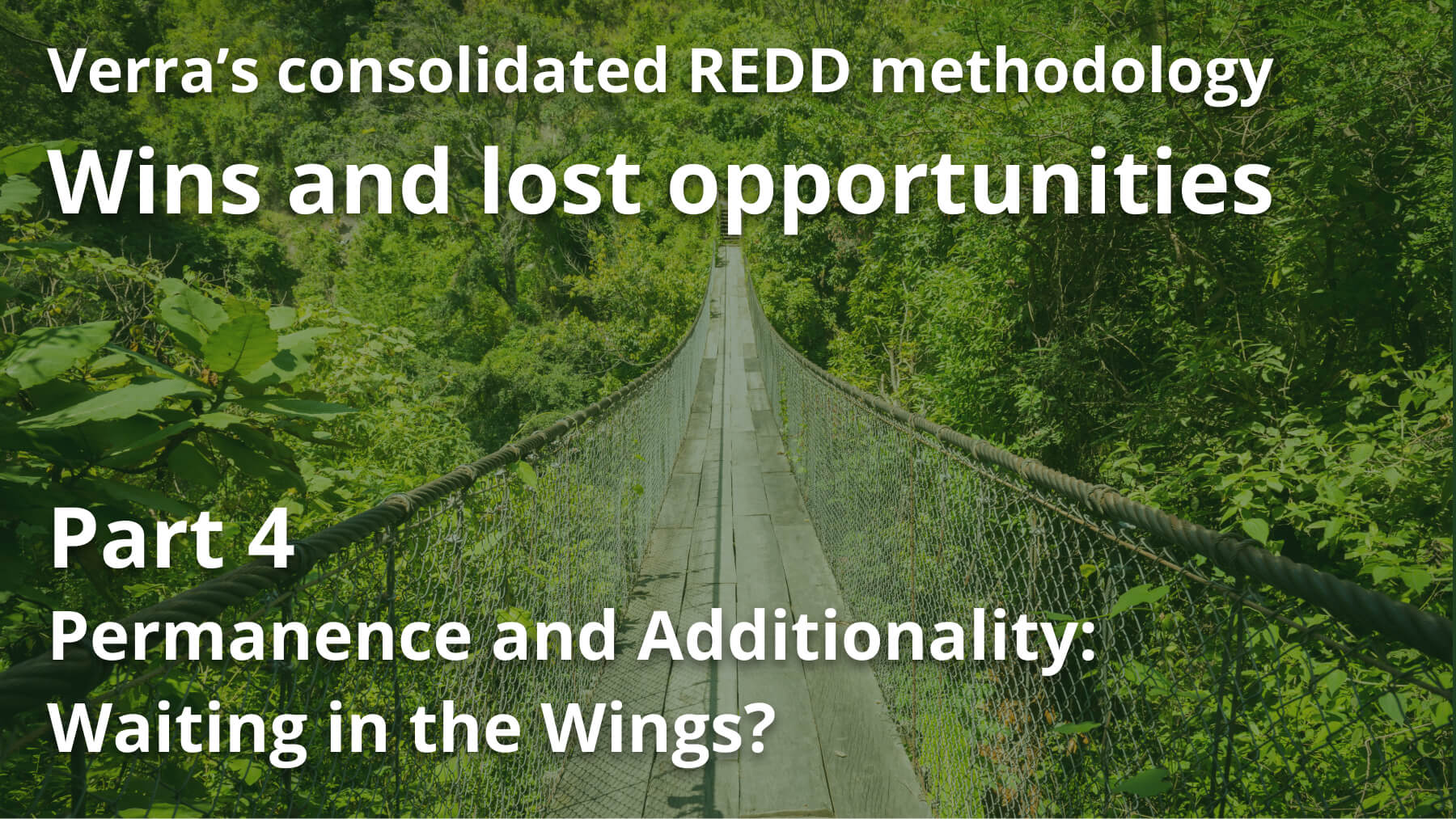
Verra’s consolidated REDD methodology: Wins and lost opportunities, in four parts
Part 1: Emissions monitoring: Under the Radar
Part 2: Baselines: All We’ve Been Waiting For?
Part 3: Baseline revision schedule: Timing matters
Part 4: Permanence and Additionality: Waiting in the Wings
In Parts 1 to 3 of this blog series, we have noted several key “wins” of the new VCS Consolidated REDD Methodology (VCRM). These included new requirements to:
- Monitor forest degradation;
- Undertake more comprehensive uncertainty analyses of emissions estimations and make deductions for such uncertainty;
- Use a baseline that is “allocated” (or nested) from a regionally determined cap on expected emissions;
- Set the baseline using a risk map determined by a third party;
- Reassess a baseline every six years.
The VCRM rightly focuses on addressing the risks of overcrediting associated with setting the baseline and monitoring emissions. But what about other issues that can affect the GHG integrity of carbon credits? Calyx research has shown that non-permanence risk, and to a lesser extent additionality, can limit the quality of (and result in low ratings for) REDD projects.
First, we applaud Verra’s initiative to increase monitoring and compensation beyond the project duration – usually 30 years - through its proposed Long-Term Monitoring System (LTMS). We hope to soon see movement on adopting this proposal.
Second, while most REDD projects are additional on their own merits, VCS currently allows a project to choose a start date that can be as far back as five years prior to validation of the project. Requiring documentation of “prior consideration”, including the clear role carbon revenues play in project initiation, would strengthen the case for additionality, i.e. that carbon revenues were truly decisive for the project activity. Such documentation could include evidence of stakeholder consultations discussing the carbon revenue opportunity, letters of intent or MOUs with carbon investors, or carbon benefit-sharing agreements prior to the start of implementation. At Calyx, every rating starts with an assessment of additionality risk, which weighs heavily on the outcome.
We believe the VCRM will strengthen the case for quality in REDD projects. But we also hope Verra goes one step further to implement long-term monitoring and improve additionality provisions for REDD projects – as our report states, “Turning REDD into Green”.
Get the latest delivered to your inbox
Sign up to our newsletter for the Calyx News and Insights updates.
